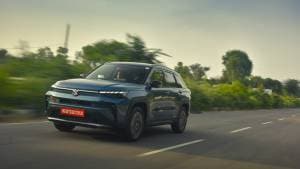Honda CB350RS vs Jawa 42 2.1 comparative review - getting racy!
Once you have a potent platform it is only natural that you make it lucrative by expanding it into multiple product offerings. From simple platform sharing like Kawasaki's 650 line-ups of Ninja, Versys, Vulcan and Z, to the more complicated platform siblings like the Audi RS Q8 and the Lamborghini Urus - we have seen many examples of how manufacturers develop a good platform and milk it for eternity. In a bid to take on Royal Enfield, Honda and Jawa have taken a relatively similar approach by developing an excellent standard motorcycle - in this case, the CB350 H'ness and the Jawa - and expanding it into multiple body styles to make the portfolio more appealing. So what we have here are the two new entrants, the Honda CB350RS and the Jawa 42 2.1. Both these motorcycles are sportier takes on their standard variants but have different appeals than each other, and virtually no competitor of their kind from the Royal Enfield stable.
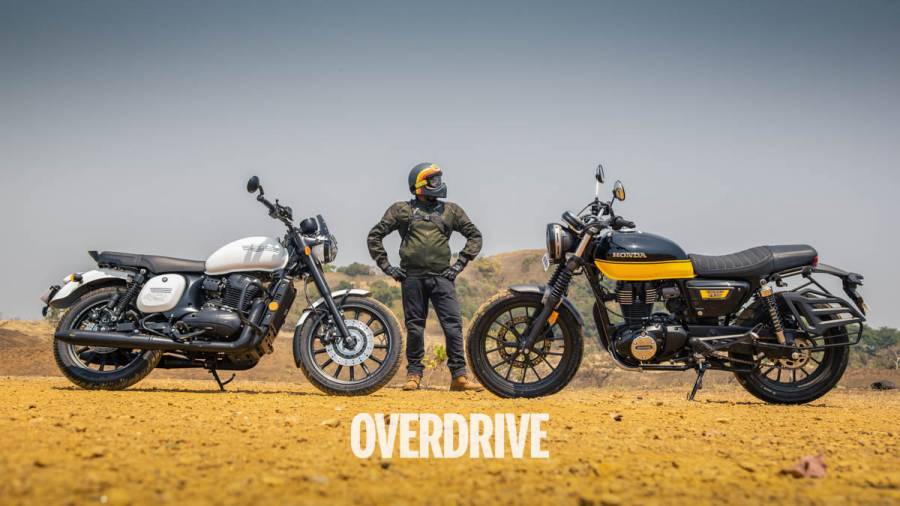
Design
While the H'ness was benchmarked closely against the Royal Enfield Classic 350, the CB350RS carves its own image which does away with all the old-school chrome for sportier matte black finishes on the engine casing, exhaust system and headlamp bezel. Then there is the silhouette inspired by the CB1000R - with a stubby tail and the upswept exhaust, making the RS appear sportier than the standard form of the CB350 H'ness. That said, this isn't as hardcore as what the Thruxton is to the Bonneville, its more like what the Speed Twin is to the T120. Or closer to the price range, it is more on the lines of what the 42 is to the standard Jawa. Speaking of which, the Jawa 42 2.1 is a spin-off on the 42 itself and co-exists with its donor.

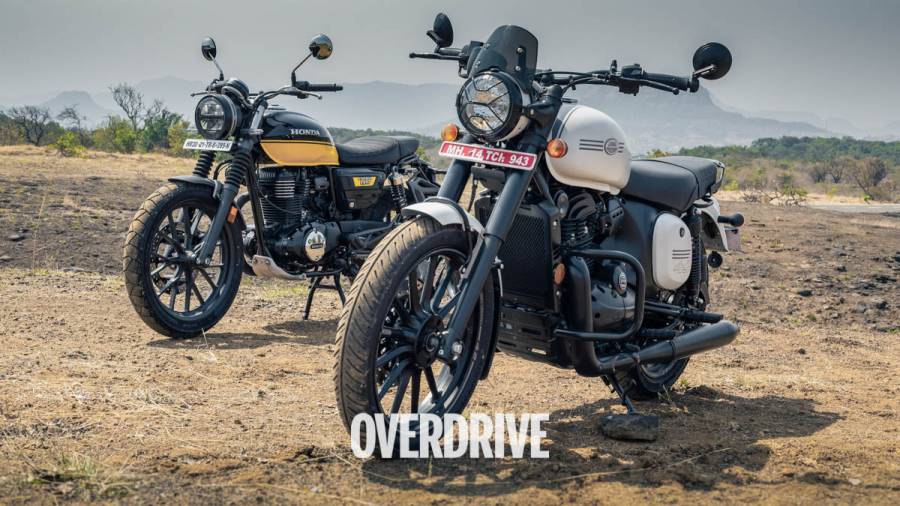
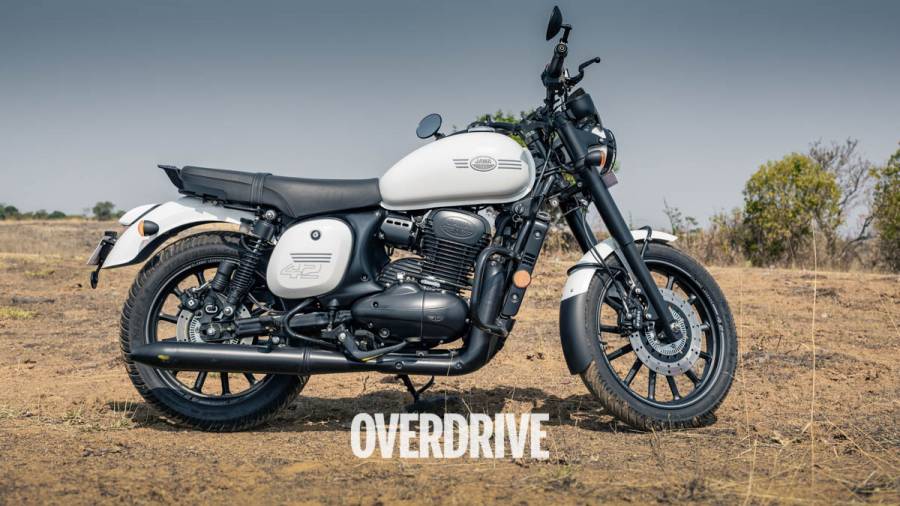
Design is a personal preference and both motorcycles look handsome in their own separate way. The RS goes with relatively modern styling with the LED lamps all around and the semi-digital instrumentation.
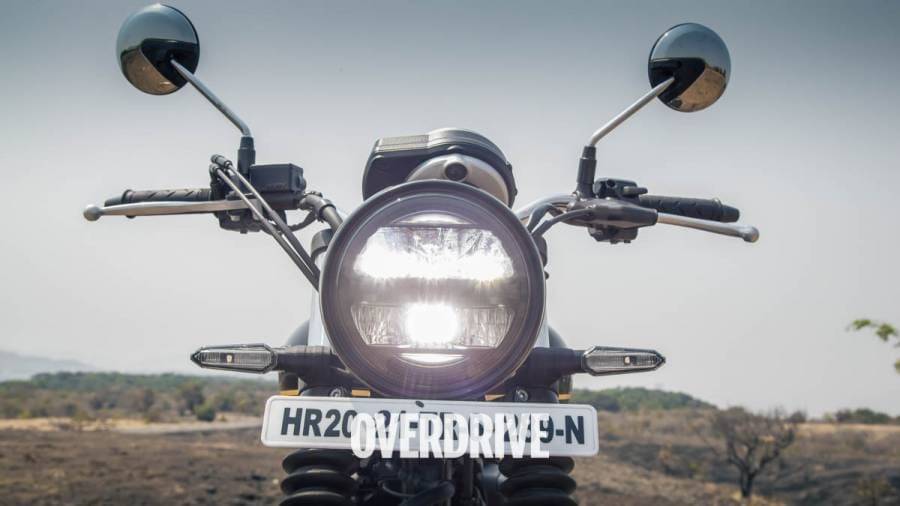
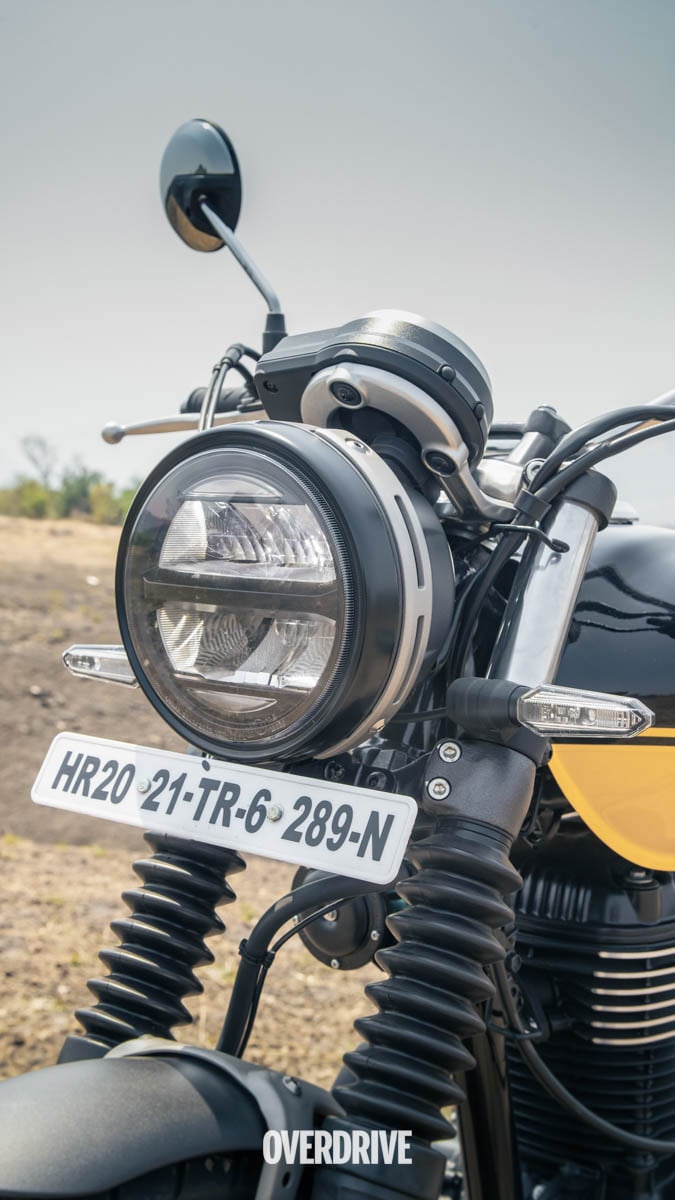
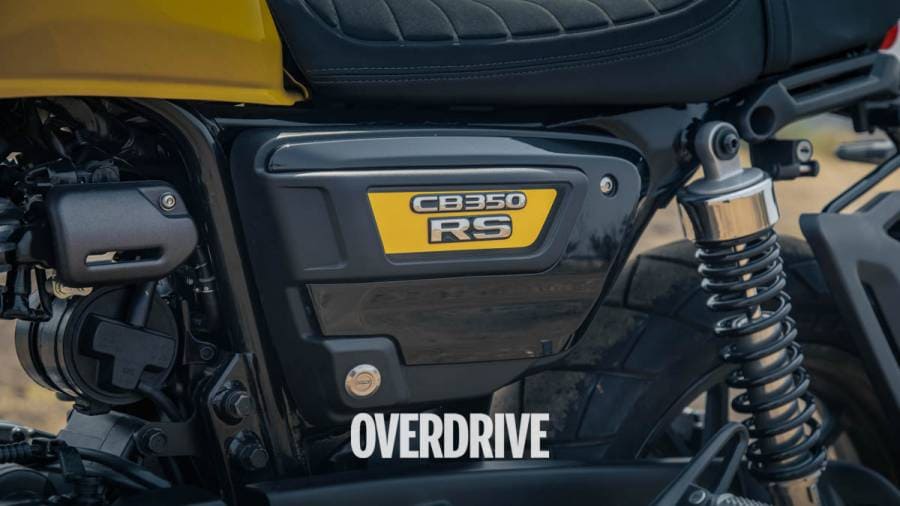
The Jawa on the other hand sticks to its old-school charm with some custom design elements like the offset analogue instrumentation and optional accessories like the fly screen and the headlight grille (both of which can be retrofitted on the 42).
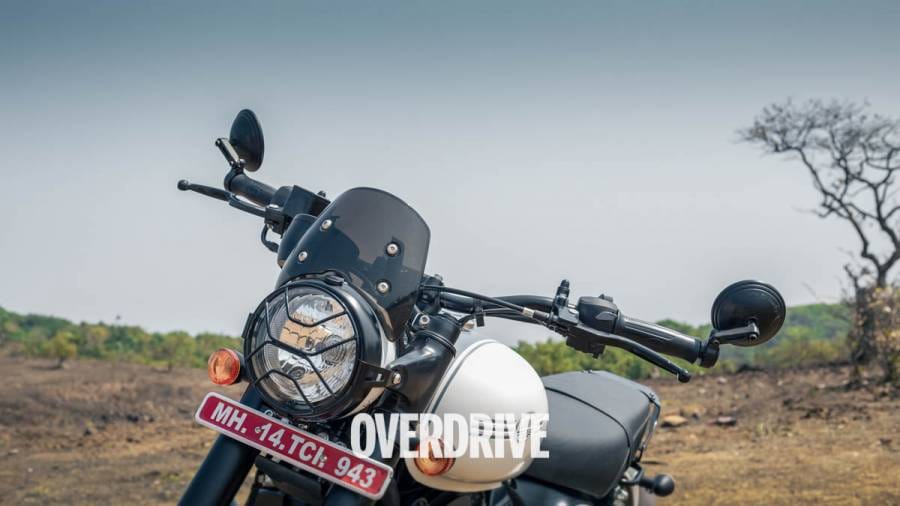
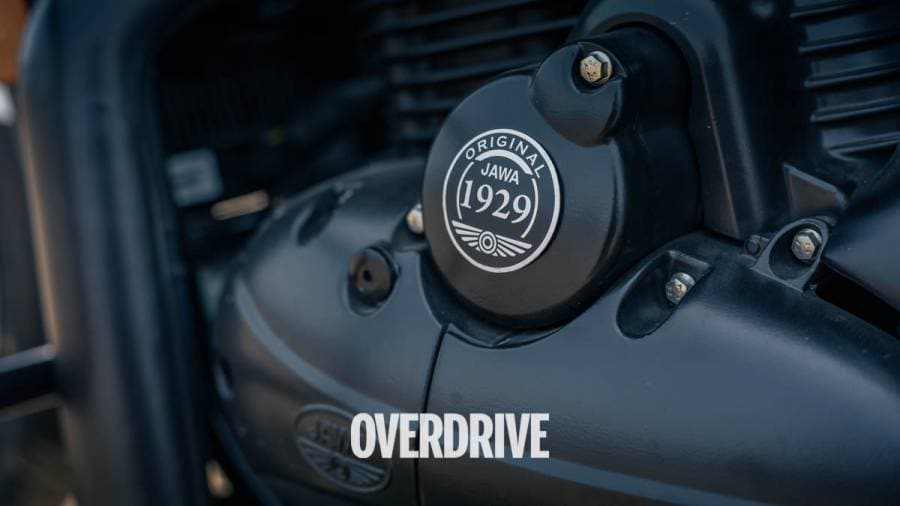
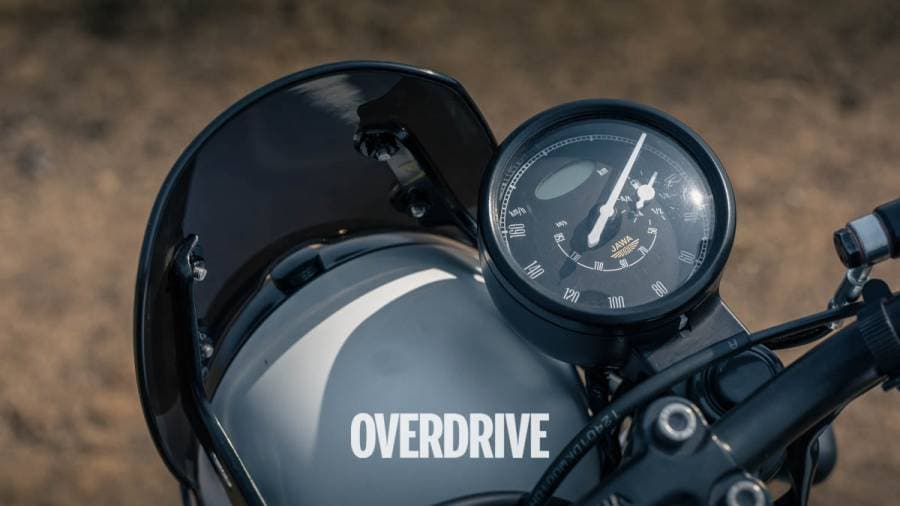
The Jawa 42 2.1 is even sportier now with the blacked-out engine and exhausts, new colour options that have a better finish than before, complemented by a grey racing stripe with matching grey switchgear, and alloy wheels that are detailed with pin striping and an abstract Jawa badge placed on one of the spokes. The sum of all these enhancements makes the 2.1 look great without losing the old-school charm of the original.

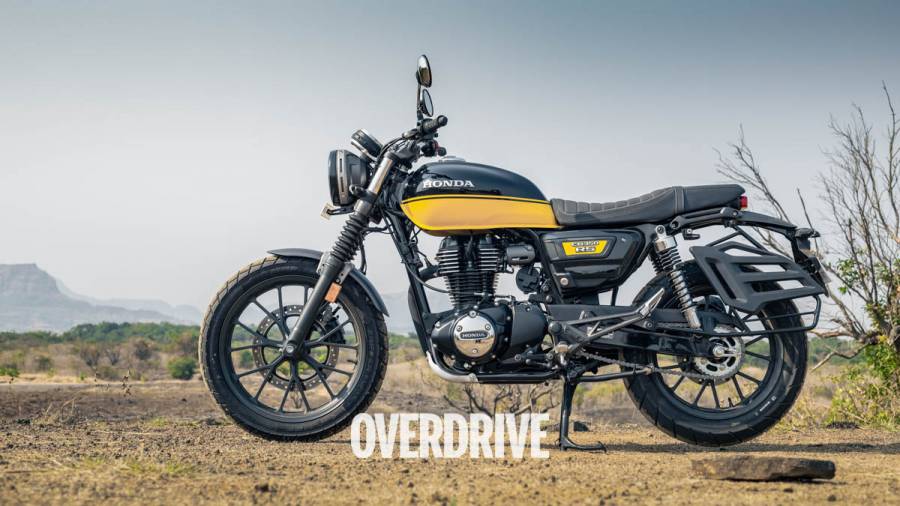
Speaking of wheels, the Jawa goes with an 18-front/17-rear, shod with the sticky MRF Zapper tyres which complement it's intent rather well. The CB350RS on the other hand uses a 19-inch front wheel like the H'ness but drops an inch on the rear with a 17-inch wheel and a fatter rear tyre. But to maintain an identical rolling circumference and gearing to the H'ness, the rim isn't too wide and makes the tyre balloon out a little bit. And because Honda insists that the CB350RS is part café-racer and part scrambler, they have gone with block pattern tyres. Hold this thought and read on.

Riding dynamics and engine performance
The block pattern makes the RS marginally better-equipped for broken roads, gravely and muddy pathways, should you encounter them on your ride, but around winding tarmac, the tyres squirm and feel skittish especially at higher lean angles. The Jawa's slimmer rubber handles equally well if not better.
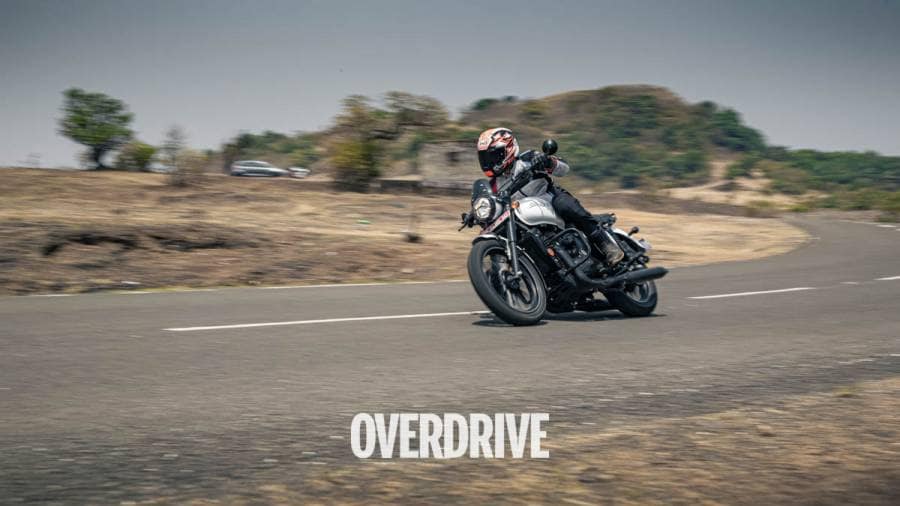
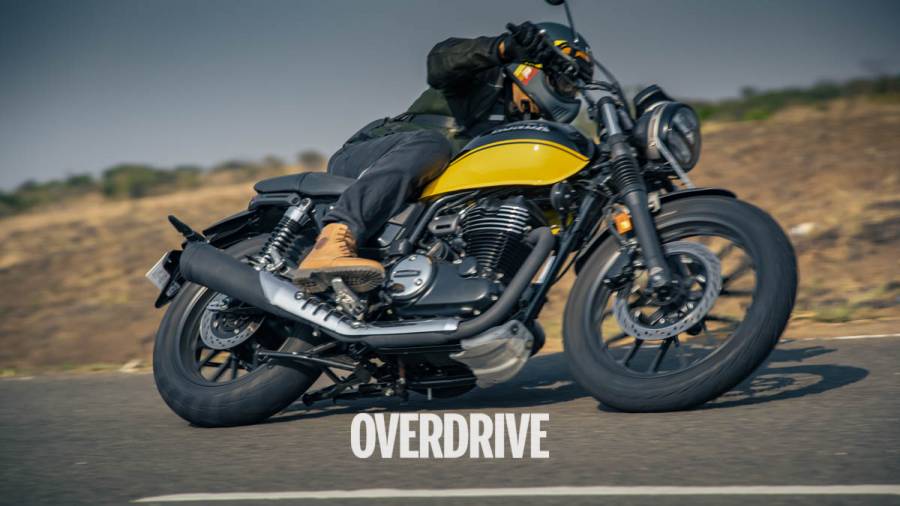
But which one you like around winding roads will depend on what seating posture you prefer between the two. The Jawa's rider triangle is exactly like the standard, meaning you will sit in a bit of knee up, upright and relatively more foot-forward position, which gives you the sensation of riding atop the powertrain. I wish Jawa had made the riding posture a bit sportier with the 42 2.1, but the limitation comes because of the way the footpegs are directly bolted onto the frame for staying true to that classic form.
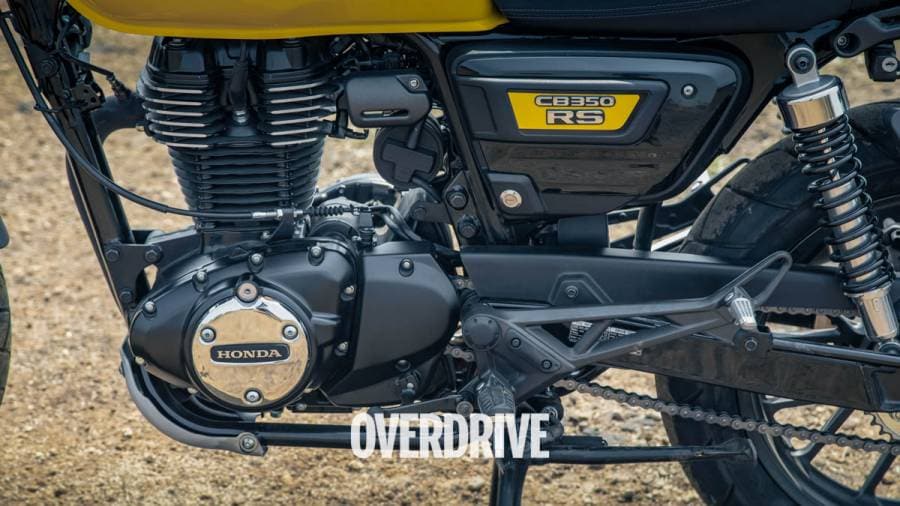
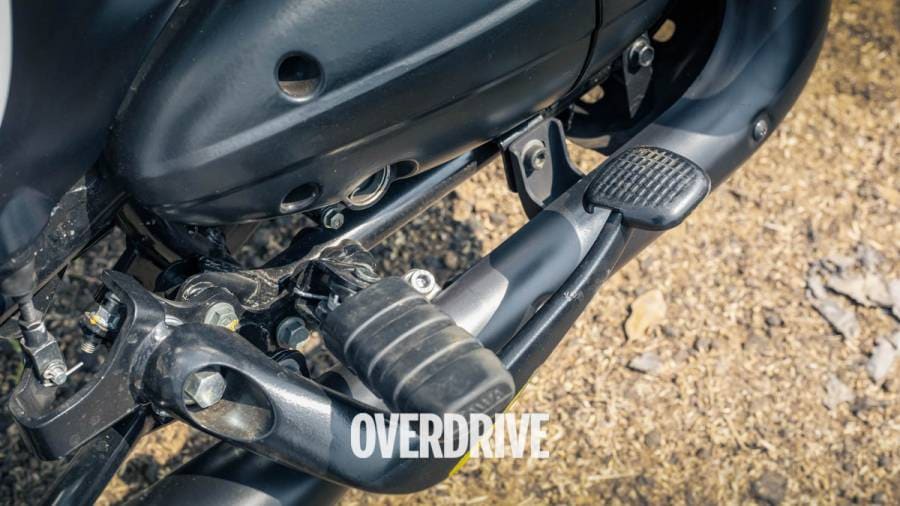
The CB350 has a more accommodating footpeg stay which has allowed the RS to have a different seating geometry over the H'ness. Honda has moved the position of the rider footpegs rearward by 112mm and upward by 12mm, whereas the handlebar sits 10mm higher and 41mm farther. What this translates to is a slightly more forward-biased seating which imparts a higher sense of control, accommodates larger riders with ease, and the repositioned footpegs don't scrape as often while cornering as their counterparts on the H'ness. On a related note, all 2021 Jawa models have a redesigned side stand for better cornering clearance.
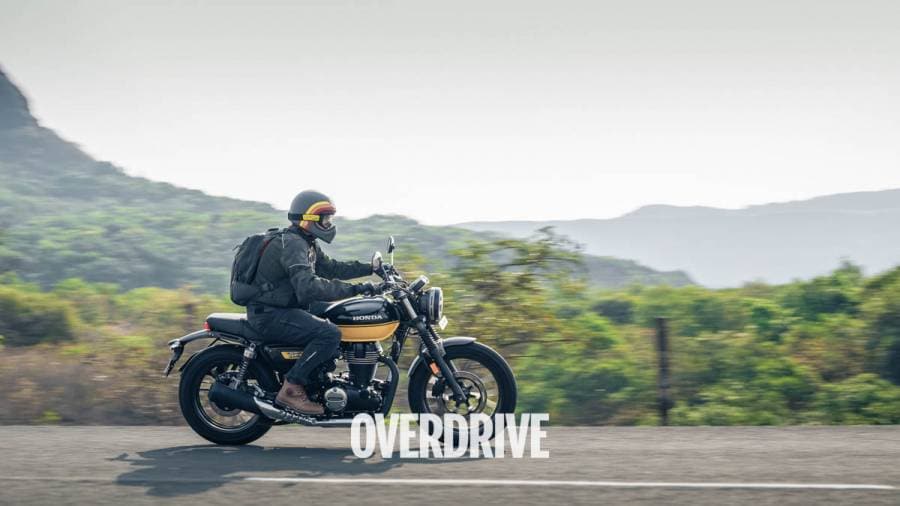
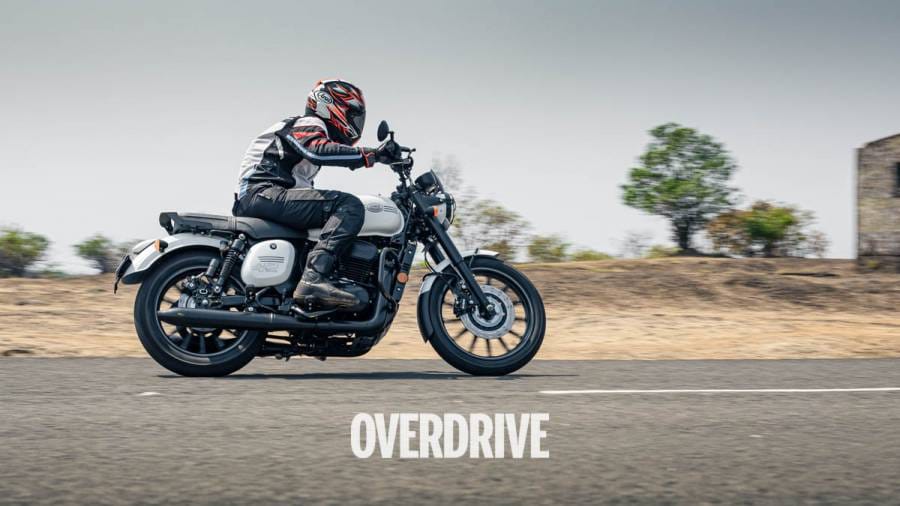
Since we are on the topic of ergonomics, I have done 200km road trips in the saddle of each of these bikes and while their standard form factor doesn't make them the best touring machines, I find the seating and ergonomics of the CB350RS to be relatively more comfortable for longer distances - both, for the rider and the pillion. The seat cushioning of the 2021 Jawa motorcycles has improved too, making it more comfortable than before. For daily commutes, however, you won't find much difference in the comfort levels between the two motorcycles.
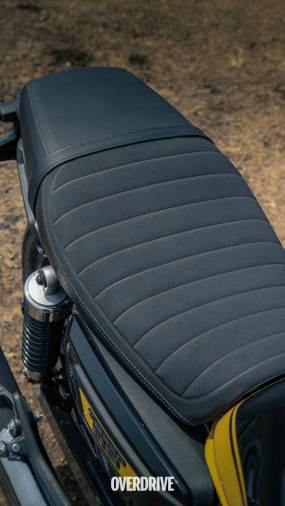
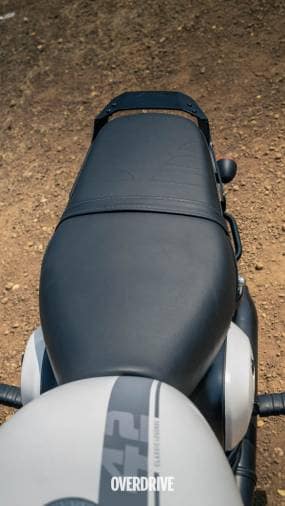
On the RS, the chassis is carried over unchanged and the suspension setup isn't very different than the H'ness, meaning that the ride is supple and more comforting. In comparison, the Jawa feels stiffer. In a bid to avoid scraping the underbelly over speed humps, the rebound has been firmed up a bit, meaning you have to slow down for bad patches to avoid a bone-jarring ride.
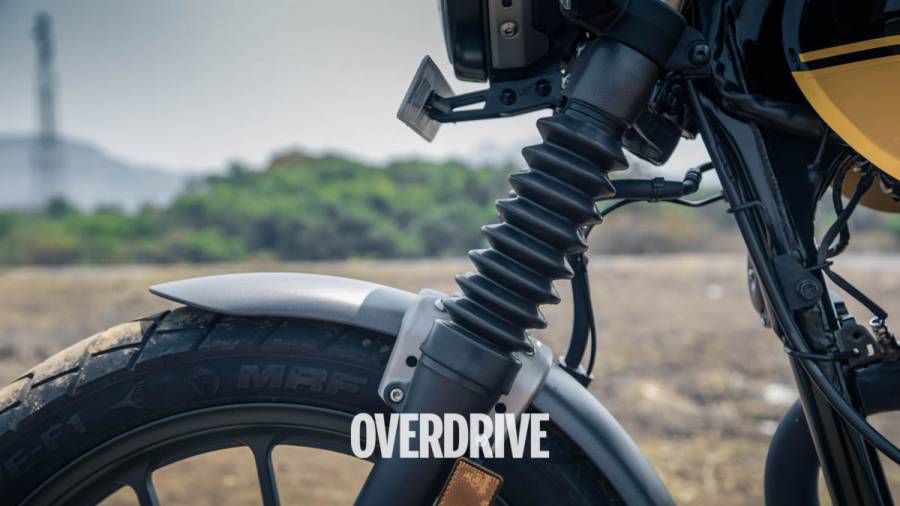
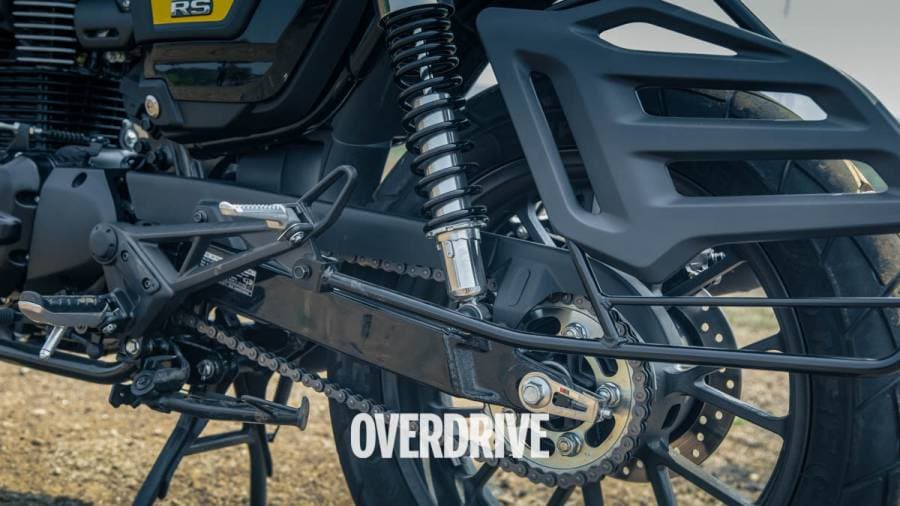
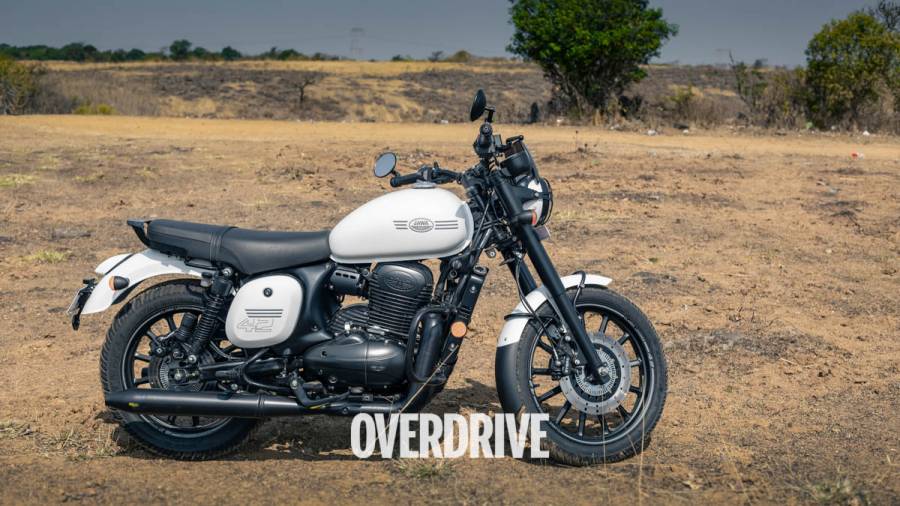
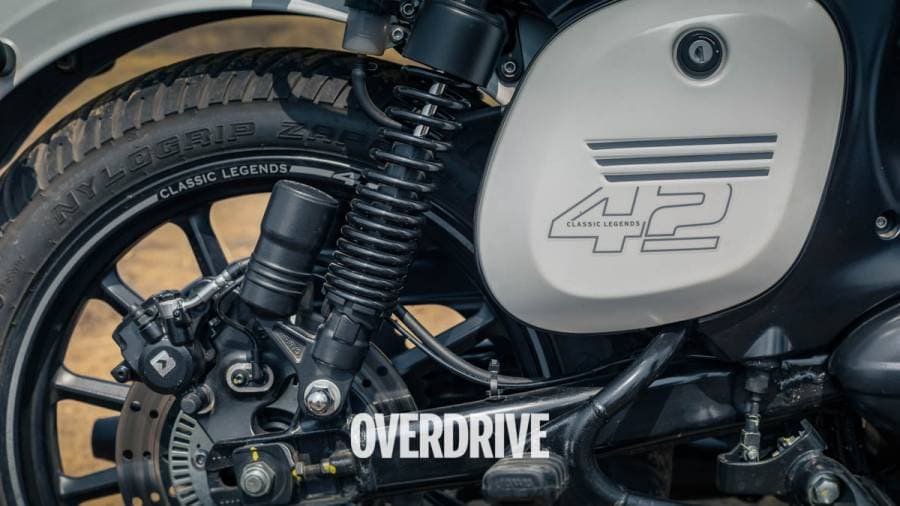
Like its chassis and suspension, even the engine on the RS remains unchanged from the H'ness. That said, there is a marginal difference in performance figures of the RS versus the H'ness - thanks to a 2kg weight loss on the motorcycle. The characteristics of the engine remain unchanged though - its cruising sweet spot is between 100-110kmph, it will go past 130kmph with some reluctance and clamour, has tall gearing which needs multiple gear shifts while riding at city speeds, and excellent fuel economy that you expect from a Honda. On a related note, you are likely to love the engine for its smooth performance and quick rev build-up and though it isn't in the same ballpark as the 250cc street nakeds, the performance feels adequate for road use. While the tyres and rear-end design might make you think of the CB350RS as a scrambler too, the engine lacks the low-end grunt and the suspension lacks the travel or softness that you would expect for scrambling.
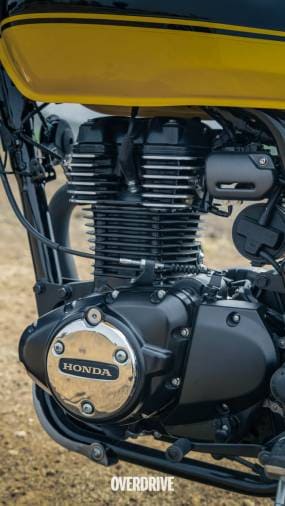

Both engines feel very different from the typical Royal Enfield motors that we have sampled in this segment (discounting the Meteor and the 650s). These engines from Honda and Jawa are tuned to make you happy no matter how you would like to ride these modern retros - slow and steady, or fast and racy. But for the latter, the Jawa has the sportier edge.
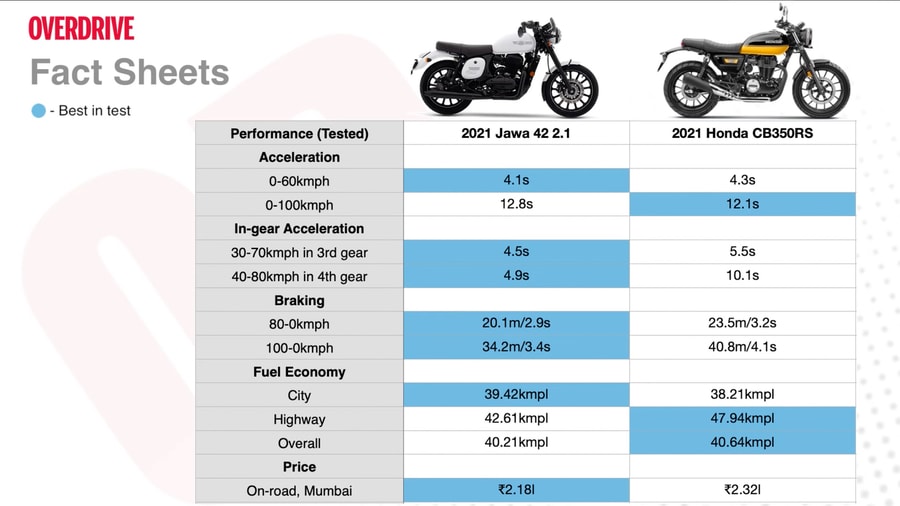
It revs more freely, sounds a tad bit racier and is the most eager engine in this category of modern retros. Its BSVI version is even better with what Jawa likes to call the cross-port arrangement for the cylinder heads, which essentially has a more refined flow of energy. To that effect, even the header pipes are functional now and directly lead the exhaust gases to the canister via an integrated catalytic converter. Previously the gases would flow into a collection chamber under the bike which housed the cat-con, and would then take a fresh route to the canisters. So while the power has increased only marginally on the 2021 Jawa engine, the energy losses are lower and the performance gain is much higher. That makes it significantly quicker than the Honda and also gives it better tractability in the city. The fuel economy figures aren't too far behind either.
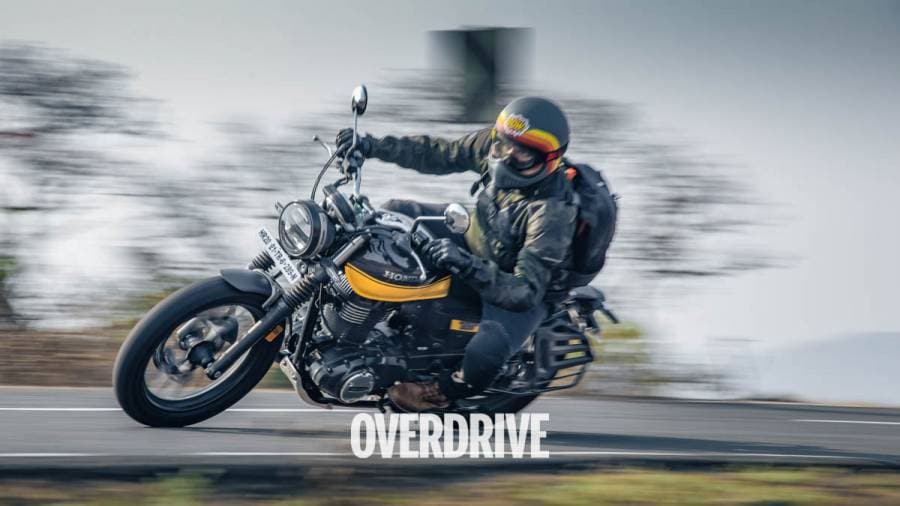
Since dual-channel ABS is now standard on the Jawa, the braking figures see an improvement too. Despite having larger brakes, the RS needs much longer stopping distances, slightly more than the H'ness even, and I would blame it on the tyres. But the Honda has a better safety kit comprising of a switchable traction control system, which along with a slip-and-assist clutch prevents sliding and hopping of the rear wheel. The clutch is also light and convenient making it the easier bike to ride in heavy traffic.
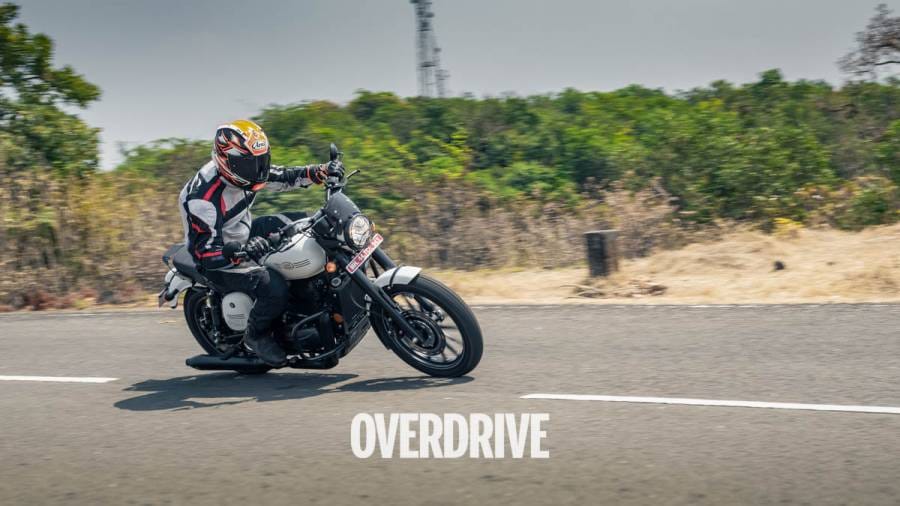
Verdict
At the time of this test, the CB350RS was about Rs 14,000 dearer than the Jawa 42 2.1, but it still makes the Honda more value for money when you consider the better safety features, the hybrid instrumentation and the LED lighting. Then there are the added niceties like Honda's reliable engineering and low cost of ownership. The Jawa 42 2.1 is a good step up from the original, but in the company of competition that is bringing new-age features to the modern retro segment, it does leave you wanting for a bit more. That said, I would choose the Jawa over the RS if I wanted a good looking classic with the go and eagerness of a modern motorcycle. But at the end of the day, it is the overall package that matters and as the points add up, the CB350RS is the clear winner of this test.
Photography Varun Kulkarni
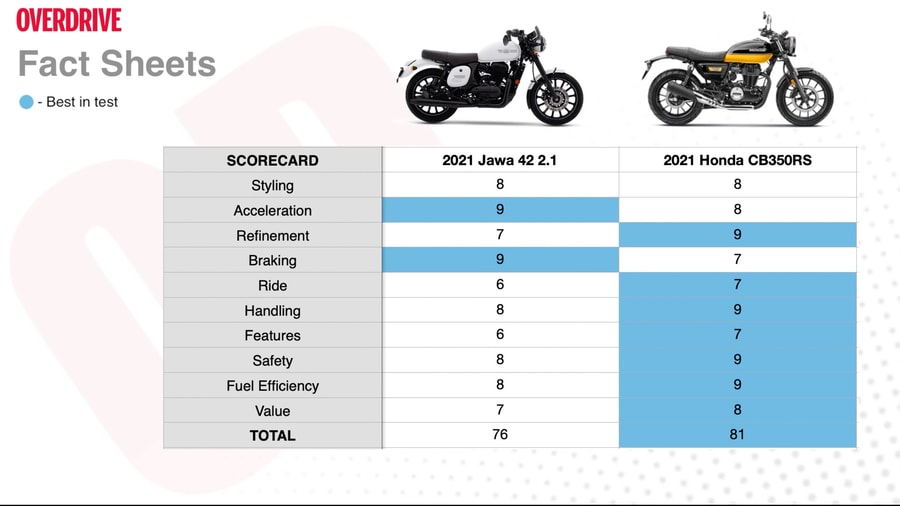
Starts Rs 2.07 Crore
3996cc
Automatic
600
800
-NA-
Starts Rs 3 Crore
3996cc
Automatic
650
850
-NA-
Starts Rs 1,96,000
348cc
5-Speed
20.78
30.00
-NA-

